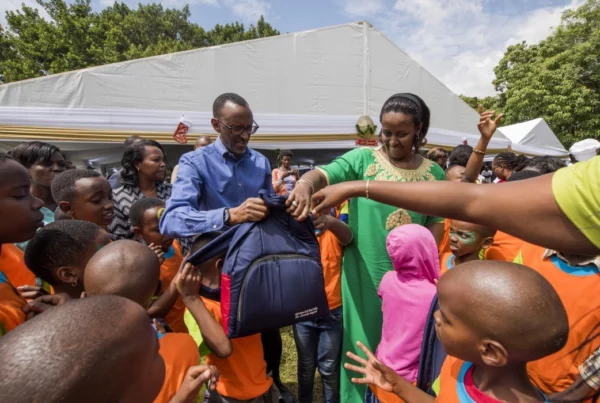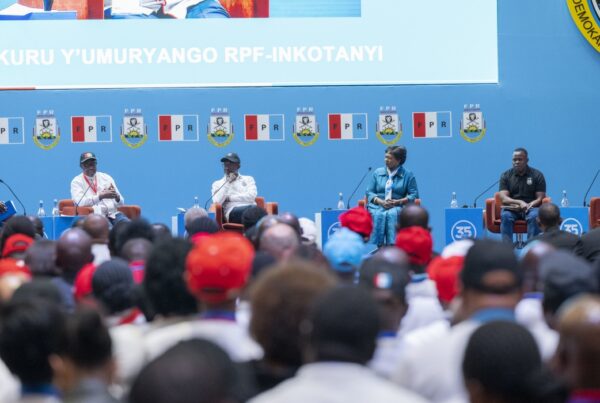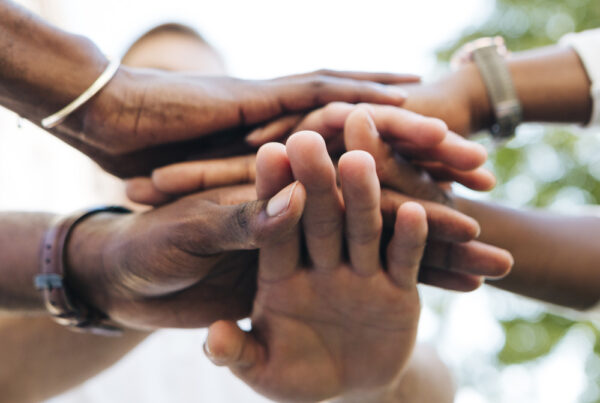Lest they forget, Rwandans should constantly sing about the long, hard way they’ve travelled. So hard that anybody can validly call today’s Rwanda a miracle risen from death.
That’s why anyone so much as remotely familiar with her recent history would have expected last Tuesday to be a day of pomp, pageantry and military might glitz.
That it wasn’t is, interestingly, the reason the country is recognized as “a remarkable turnaround”. It’s a tag that’s not in dispute.
Because even naysayers and mudslingers of every colour, creed or continent unfailingly start with stating the fact before they follow it with a “but” and then plunge into long, unverifiable abstracts designed to annul it.
But we are getting ahead of ourselves.
October 1st is a day that propels every Rwandan back to 1990. Which year saw nothing like military might. Might, which has never been on the wish list of the people of this land, anyhow. Because such might, “a remarkable turnaround” it does not beget.
Anyway, October 1st, 1990, was the day a gunshot rang out at one of the gates into this country. The gate: Kagitumba border post. The shot’s intention: to pinch the then-ruling clique into waking up to the fact that marginalising, banishing or freely butchering sections of their citizens was not a catalyst for overall development.
That combining energies, all as citizens, for common progress was the traditionally accepted wisdom of their ancestors. That “United we stand, divided we fall” is a principle that was long ago articulated by a sage from distant lands but holds true for all societies.
That together Rwandans will stand tall but once discordant, the abyss awaits.
Alas, hardly had the effort to spread that principle been launched than it was given short shrift.
The small force that tried to thrust the gunshot-pinch was thrown into total disarray on the second day when their commander, Fred Rwigema, was felled. A death that befell others who attempted to prod further inside the country, to all result in unimaginable turmoil.
Anarchy for the surviving young fighters so ravaged all of them that it is a wonder that some could ever see a tomorrow. How a tomorrow there was is an odyssey whose telling only the gallants then-involved in the campaign can do justice to.
Still, amidst the misery, some snippets of that odyssey border on the comical.
Like the story told about a young fighter spotted floating on Umuvumba River, perched on a cluster of grass and shod of clothes and even nails. When he saw his comrades standing in their befuddled hurdle by the riverside, all he could do was wave to them as he said: “Bye, bye! I, Kanaka, am off and floating away. And away like a duck, I sail!”
Luckily, at the third attempt, the comrades managed to fish him out of the river.
Another this time tormenting one is told of a tiny group holed up at the border with Tanzania. Thus holed up, they could only receive morsels of food from fellow fighters all the way from a forest near Kagitumba, where it was possible to cook and conceal the smoke.
Unfortunately, time came when they waited for days and nobody showed up. They had no alternative but to venture back towards Kagitumba, where, to their horror, they found the others had fallen into an ambush on the way. Somehow, they sneaked around the ambush and made it to Kagitumba where, shock of shocks, they found no sign of any comrade.
These are only two little examples of multitudes and multitudes of much more perilous others.
Fortunately, unbeknown to these fighters, a new commander had sneaked into the small fringe area all the way from the USA. On arrival, he’d found the band of fighters there as haywire as ants on a hot pan.
When he’d asked one fighter who the helmeted soldiers he could see on the hill across were, the simple answer was: “Sir, that’s the enemy force that’s bombing us into smithereens!”
Just like that? Commander Paul Kagame, today president of the country, quickly understood the situation and went to work.
He rushed these into hiding to let them calm down and recover their senses. After which, he organised rescue teams to find other fighters wherever they were hiding. And after, organised all of them into a guerrilla force that was so elusive it couldn’t be traced to any location.
It is this tiny, compact guerrilla force of hundreds that dug in to face the Habyarimana regime’s amassed assistance of a combination of armies from eleven countries, led by a superpower. A superpower-led behemoth of a force, a more overwhelming one there couldn’t be.
As is known now, the tiny guerrilla group slowly expanded and grew into a formidable force that overcame this multinational monster force after a mere four years. That, including halting the most horrendous genocide of the 20th century they sponsored and effected.
A clear vision, right cause and well-thought-out strategy carried the day for the Rwanda Patriotic Front, as they do for the Rwanda Patriotic Front today.
Cementing the unity of Rwandans, building consensus for collective decision-making to all together deliver their envisioned knowledge-based, middle-income economy.
That’s how, instead of pageantry, last October 1st was quiet, reflective Patriotism Day.



